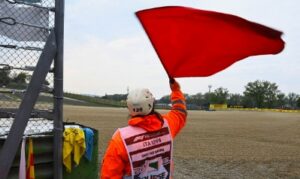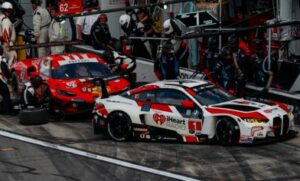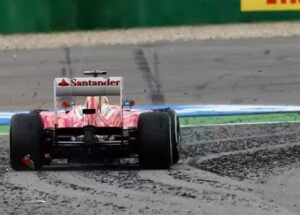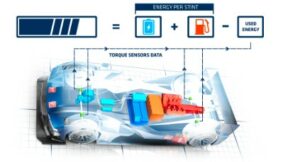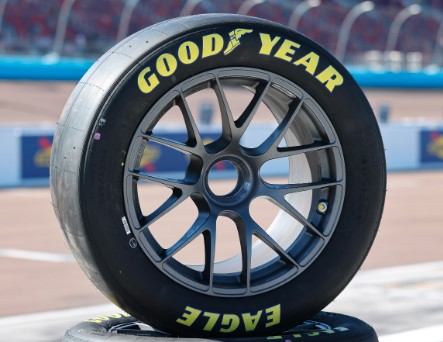
In the high-stakes world of racing, where milliseconds can determine victory or defeat, every component of a race car plays a crucial role. Among these, wheels stand as unsung heroes, bearing the weight of performance expectations and undergoing constant evolution to maximize speed, control, and safety. This comprehensive exploration delves into the fascinating journey of wheel technology in racing, tracing its history, the impact of innovations, and the role it plays on diverse racing circuits, including the iconic Thunderbird Speedway.
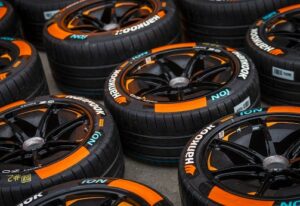
The Foundation: Racing Wheels Through the Ages
The history of racing wheels is a tale of innovation and adaptation, mirroring the evolution of motorsports itself. In the early days of racing, solid rubber tires mounted on wooden or steel-spoked wheels were the norm. As speeds increased and competitions grew more intense, the demand for lightweight yet durable wheels became paramount.
Wooden Spokes to Steel Wires
Wooden-spoke wheels dominated the early racing scene, offering a balance of strength and weight. However, as racing cars became faster and more powerful, the transition to steel wire-spoked wheels became a necessity. This change provided enhanced strength while reducing overall weight, a critical factor in achieving higher speeds.
Pneumatic Tires: A Revolutionary Shift
The advent of pneumatic (air-filled) tires marked a revolutionary shift in racing wheel technology. The ability to adjust tire pressure for different track conditions significantly improved traction and maneuverability. This innovation laid the foundation for the modern racing tire and became a game-changer across various racing disciplines.
Racing Wheels Today: Precision Engineering and Materials
Contemporary racing wheels are a marvel of precision engineering, incorporating advanced materials and cutting-edge design to meet the demands of modern racing. From Formula 1 to stock car racing, each discipline has specific requirements, and wheel technology has adapted accordingly.
Lightweight Alloys: Shedding Pounds, Enhancing Performance
In pursuit of optimal performance, racing wheels are predominantly crafted from lightweight alloys, such as aluminum or magnesium. These materials offer a crucial balance between strength and weight reduction, allowing for faster acceleration, improved handling, and better fuel efficiency – factors that are integral to success on the track.
Forged vs. Cast Wheels: Strength and Durability
The manufacturing process plays a pivotal role in wheel performance. Forged wheels, crafted through a process of compressing and shaping metal under high pressure, offer superior strength and durability compared to cast wheels. While cast wheels are more cost-effective, the demanding conditions of racing often favor the resilience of forged counterparts.
Aerodynamics and Wheel Design
Aerodynamics is a critical consideration in racing, and wheel design is no exception. The shape and profile of racing wheels are meticulously crafted to minimize drag and enhance airflow around the car. This not only contributes to speed but also improves the overall stability and handling of the vehicle.
Tire Technology: The Interface Between Car and Track
Wheels and tires form a symbiotic relationship, and advancements in tire technology have a direct impact on wheel design. Racing tires are engineered to provide optimal grip, withstand intense heat, and deliver consistent performance throughout a race. The evolution of tire compounds, tread patterns, and construction has pushed the boundaries of what racing wheels can achieve.
Tire Compounds: Balancing Grip and Durability
Racing tires come in a variety of compounds tailored to different track conditions. The softer the compound, the more grip it provides, but at the cost of durability. Teams strategize tire choices based on factors like track temperature, surface type, and the expected duration of a race, highlighting the crucial interplay between tires and wheels.
Run-Flat Technology: Safety on the Fast Lane
Run-flat technology has become a valuable safety feature in racing. In the event of a tire puncture, run-flat tires can maintain functionality for a limited distance, allowing drivers to return to the pits without compromising safety. This innovation enhances the overall reliability and endurance of racing wheels under challenging conditions.
Racing Wheels in Formula 1: Precision at Its Zenith
Formula 1, known for pushing the boundaries of technology, stands as a showcase for the pinnacle of wheel engineering. The Thunderbird Speedway, although not a Formula 1 track, serves as a symbolic inclusion, emphasizing the diversity of racing circuits where wheel technology continues to make an impact.
Central Locking Mechanisms: Rapid Pit Stops
In Formula 1, where pit stops are a ballet of precision and speed, central locking mechanisms play a pivotal role. These systems enable lightning-fast tire changes, contributing to the efficiency of pit stops and minimizing the time a car spends off the track. The Thunderbird Speedway, despite its differences, underscores the universal need for swift pit stop technology.
Carbon Fiber Wheels: Merging Strength and Lightness
Carbon fiber, renowned for its exceptional strength-to-weight ratio, has found its way into Formula 1 wheels. These wheels offer unparalleled lightness without compromising structural integrity, contributing to reduced unsprung mass and enhanced overall performance. The Thunderbird Speedway, while not a Formula 1 venue, represents the diverse tracks where advancements in wheel technology are showcased.
Tire Pressure Monitoring Systems: Real-Time Precision
In the high-pressure environment of Formula 1 racing, real-time data is paramount. Tire pressure monitoring systems (TPMS) provide teams with instant feedback on tire conditions during a race, allowing for timely adjustments and strategic decisions. This technology ensures optimal performance while mitigating the risk of tire-related issues.
The Impact of Racing Wheels in NASCAR: Power on Ovals
NASCAR, with its unique combination of oval tracks and high-speed battles, presents distinct challenges for racing wheels. The evolution of wheel technology in NASCAR reflects the sport’s commitment to safety, performance, and the exhilaration of racing on iconic tracks like those encountered at the Thunderbird Speedway.
Steel Wheels and Lug Nuts: NASCAR’s Trademark
NASCAR cars traditionally featured steel wheels secured with lug nuts, a design that distinguished the sport for decades. Lug nut pit stops, performed with remarkable precision, became a defining element of NASCAR racing. The Thunderbird Speedway inclusion emphasizes the significance of such traditions on diverse racing circuits.
Alloy Wheels and Modernization
In recent years, NASCAR has embraced the shift to alloy wheels, aligning with the broader trends in racing technology. Alloy wheels offer advantages in weight reduction and performance, contributing to the modernization of NASCAR race cars. This transition underscores NASCAR’s commitment to staying abreast of technological advancements.
Safety Advancements: Protecting Drivers on the Oval
Safety is paramount in NASCAR, and wheel technology has played a role in enhancing driver protection. Tethers, designed to prevent detached wheels from posing hazards during accidents, have become a standard feature. These safety measures exemplify NASCAR’s dedication to minimizing risks on oval tracks like those encountered at the Thunderbird Speedway.
Thunderbird Speedway: A Blend of Tradition and Adaptation
Nestled in the racing landscape is the Thunderbird Speedway, a venue that encapsulates the essence of grassroots racing. While not a Formula 1 or NASCAR track, its inclusion emphasizes the diversity of racing circuits where wheel technology undergoes continuous refinement.
Local Racing and Wheel Dynamics
Local racing circuits, like Thunderbird Speedway, often feature a mix of vehicle classes and wheel technologies. From stock cars to open-wheel racers, the dynamics of racing wheels on local tracks showcase the adaptability of wheel technology to different racing environments.
Grassroots Innovation: Lessons from Local Tracks
Grassroots racing serves as a hotbed of innovation, with local teams often experimenting with different wheel setups and technologies. Lessons learned at local tracks contribute to the broader evolution of racing wheel technology, emphasizing the interconnected nature of the racing community.
Conclusion
The evolution of wheel technology in racing is a testament to the relentless pursuit of excellence, where every innovation aims to shave off fractions of a second, enhance safety, and push the limits of performance. From the Thunderbird Speedway to Formula 1 circuits, the diverse world of racing showcases the adaptability and resilience of wheels under varying conditions. As technology continues to propel the racing industry forward, the wheels that carry the weight of racing dreams are poised to become even more integral to the pursuit of speed, precision, and the thrill that defines the world of motorsports.

